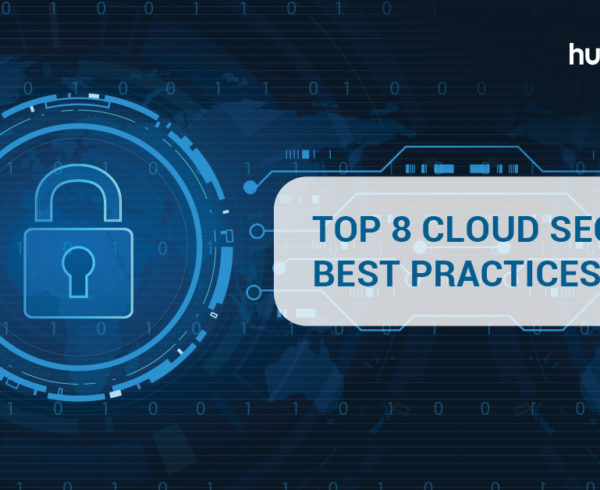Summary
The blog post highlights key considerations for a successful cloud migration. It emphasizes the importance of assessing readiness by evaluating existing infrastructure, applications, and data for compatibility with the cloud. It also discusses the significance of selecting the right cloud service provider, ensuring data security and compliance, and creating a comprehensive migration plan.
Cloud is one of the most radical technological trends in recent times, attracting many IT leaders and entrepreneurs due to its numerous benefits. The popularity of cloud migration services can be ascertained by the rapidly growing size of the market which is expected to grow from USD 3.2 billion in 2017 to USD 9.5 billion by 2022 at a CAGR of 24.5%.
The strategic shift from the on-premise enterprise IT models to highly sophisticated cloud-based ones has resulted in significant benefits and several technological improvements to businesses. Improved reliability, business scalability, uninterrupted service, better disaster recovery, and business continuity are some of the prominent reasons driving an increasing number of companies to adopt cloud computing technologies proactively.
In this post, we’re going to discuss the concept of cloud migration in more detail, along with its advantages and best practices.
Table of Contents:
What is Cloud Migration?
Cloud migration refers to the process of moving an enterprise’s data, server, and resources from a physical location to a cloud infrastructure. There can be other types of cloud migration including:
- Cloud-to-cloud migration: where the migration happens from one cloud service provider to another.
- Reverse cloud migration or de-clouding: where applications and data are shifted back to the local data center.
Advantages of Cloud Migration
The public benefit of any cloud migration process is the ability to host data and applications in an effective IT environment based on factors such as performance, cost, and security. Some of these benefits are discussed below:
-
Scalability
The cloud effectively removes the physical constraints to scalability and reduces the financial limitations of adding servers and supporting infrastructure to a data center.
-
Flexibility in Operations
Cloud migration makes the testing and deployment phase of an application much shorter due to the increased flexibility. It also saves the hassle of installing and deploying the applications manually for IT teams.
-
Accelerated Adoption of New Technology
Migrating all your applications to the cloud allows your organization to adopt new technologies much faster, while also enabling affordable technology adoption in response to suitable business opportunities.
-
Ease of Use
Most of the cloud solutions are built with user-friendliness in mind. Moving to the cloud generally requires no technical resources for setting up the architecture and is super easy to use.
-
Cost Savings
Migration to the cloud saves you a lot of money as you don’t have to spend anything on utilities, physical maintenance, and other such expenses, which brings down your operational costs significantly.
Also Read: Cloud Cost Management – All You Need to Know About Cloud Cost Management
-
Security
In most cases, clouds are secure environments that comply with all government regulations and applicable industry standards. Further, they are protected through various security solutions, policies, and tools that cloud providers update regularly.
Also Read: Cloud Security Best Practices
Best Practices for a Seamless Cloud Migration
Irrespective of the size of the organization, migrating to the cloud comes with certain challenges. Business and IT leaders have several important decisions to make during the process, including which applications to migrate and how to connect such activities to their specific business use cases successfully.
Some of the important things you can do for a seamless cloud migration include:
1. Mapping Out a Detailed Migration Strategy
It is of paramount importance to begin by mapping out a detailed migration strategy that outlines both use cases and business objectives to move to the cloud. One of the best ways to approach cloud migration is to either do it in phases or by launching a pilot migration with less critical workloads to gain the experience and expertise to be able to move forward with a larger migration strategy.
2. Train Your Staff Adequately
Lack of expertise or skills gap is one of the main barriers that enterprises face when it comes to cloud migration. This makes it important to train your employees in chosen cloud platforms in the early phase of the migration process. Since the public cloud systems are inherently different in design from that of the internal IT infrastructure of most businesses, it makes sense to organize training sessions early on to get staff across different teams up to speed in public cloud concepts.
3. Identify and Understand Workloads
Workloads typically include all the enterprise applications and their supporting ecosystems. For a successful cloud migration, you need to identify and understand whether the existing workload is suitable for the cloud, and that is dependent on the application and its supporting ecosystem. One of the ways to better understand workloads is by correlating applications and infrastructure performance.
4. Create a Robust Cloud Governance Framework
Security and compliance are some of the major concerns that organizations have when moving to the cloud. This makes it essential to develop a robust cloud governance framework with well-defined, policy-based rules to help organizations prepare for secure cloud migration. The cloud governance strategy that you design should take into account the inherent risks of trusting data and apps to third-party services. Further, it should include various tools, policies, objectives, and measures to allow your enterprise to migrate to the cloud with minimal risk and maximum value.
5. Network Management
Another great practice for seamless cloud migration is to design cloud architecture before starting the process of migration and map the resources to their respective areas. Organizations need to ensure that the resources are mapped to the same domain name, and clear and precise communication is sent to all the stakeholders involved to avoid confusion.
6. Proper Monitoring and Governance
It is extremely important to carefully examine and monitor the end-to-end process of cloud migration, as well as the post-migration phase. Monitoring and governance play a crucial role in the process of migration as applications might behave differently than they did in the data center because of changes in the architecture components. While monitoring, everything from the system, application, network, and audit trails should be captured and examined along with the data from the monitoring dashboard to find a correlation between various components and identify the areas to be improved for better functionality.
In Conclusion
Cloud migration is a business-critical process and requires multiple factors to be taken care of, including complex business decisions and comprehensive technical checklists. Without proper planning and implementation from a professional business like Hurix, a migration could degrade workload performance leading to higher IT costs, thereby negating a few of the primary benefits of cloud computing.
To achieve a seamless cloud migration experience, enterprises need to ensure that there is a robust implementation of all these strategies in a systematic manner. If done the right way, successful cloud migration can allow your business to be more agile, provide better customer experiences, and improve inefficiencies significantly.
Get in touch with us today!
Suggested Reads:











